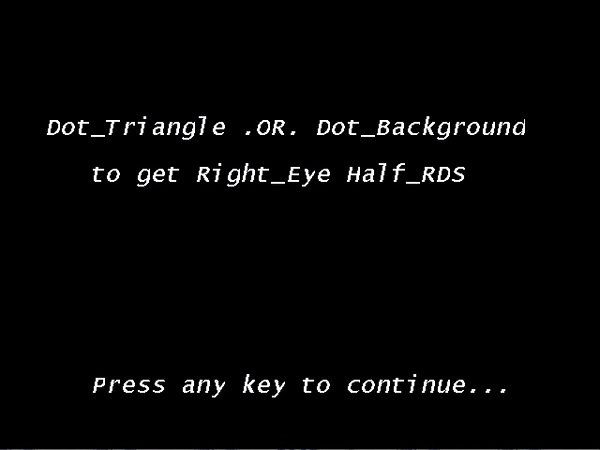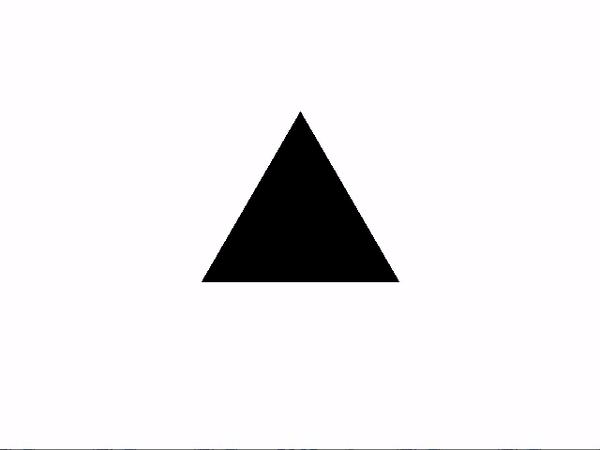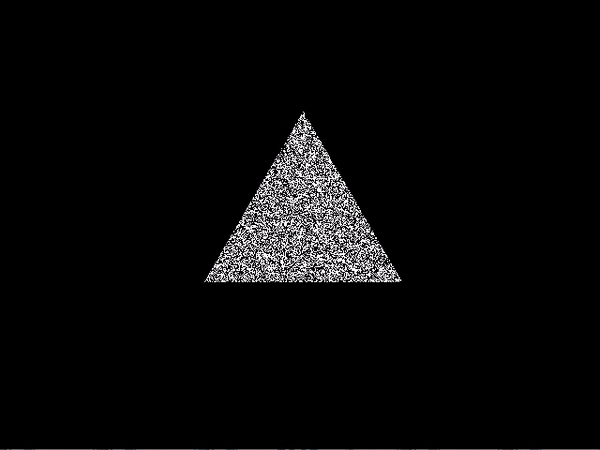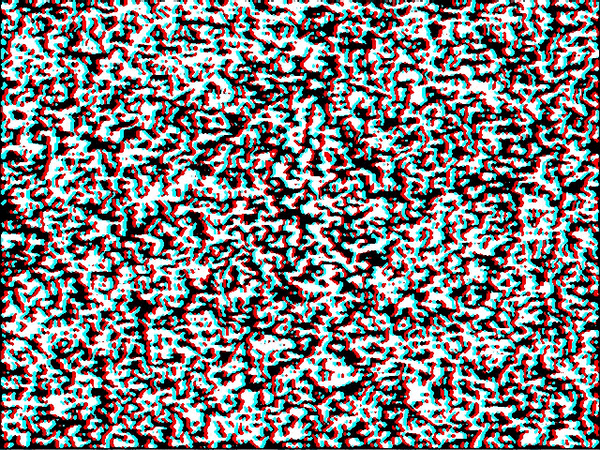Creating Random-dot Stereogram (RDS) - Step-by-Step
Ai-Hou Wang, M.D., Ph.D.
The square seen by the right eye shifted to the
left.
The square seen by the left eye shifted to the
right.
Seen with both eyes,
The blue square will appear in front of the
background.
(The monocular area looks always at the back
plane.)
The square seen by the right eye shifted to the
right.
The square seen by the left eye shifted to the
left.
Seen with both eyes,
The blue rectangle will sink behind the
background.
(The monocular area looks always at the back
plane.)
Creating a random-dot stereogram with a hidden
triangle.
Viewing the stereogram with red-blue goggles.
Right eye: blue lens, left eye: red lens.
• The triangle appears in front of the background with
7 pixels disparity.
* The triangle in the right-eye half-stereogram is
shifted to the left by 4 pixels.
* The triangle in the left-eye half-stereogram is
shifted to the right by 3 pixels.
• The background sinks behind the real plane with 4
pixels.
* The right-eye half-stereogram is shifted to the
right by 2 pixels.
* The left-eye half-stereogram is shifted to the left
by 2 pixels.
• The triangle appears in
front of the real plane with 3 pixels.
Prepare three materials:
• A random dot pattern
for the foreground
• A random dot pattern
for the background
• A shape to be embedded
within the stereogram
(a triangle in this
example)
Material 1
Generate a 50% density random dot pattern for the
foreground

Material 2
Generate a 50% density random dot pattern for the
background

Material 3
Create a shape to be
embedded within the stereogram
(a triangle in this
example)
(essentially any shape will
do)

Create the right
half-stereogram
The triangle and the foreground random dot pattern
are logically ANDed to form a "dot
triangle."

The "dot
triangle" is shifted 4 pixels to the left.
The figure seen by the
right eye shifted to the left.
The figure seen by the left
eye shifted to the right.
Seen with both eyes,
The figure will appear in
front of the background.

Reverse the black and white of the triangle

"Reversed
triangle" shifted 4 pixels to the left

The “shifted reversed
triangle” and the background random dot pattern
are logically ANDed to form
the “dot background”.

The “dot triangle” and the
“dot background”
are logically ORed to get
the right half-stereogram.

The right half-stereogram
shifted 2 pixels to the right

The right half-stereogram
is convolved 5 times
to remove the high spatial
frequency components

Make right half stereogram blue
colored (cyan colored)

Create the left
half-stereogram
The triangle and the foreground random dot pattern
are logically ANDed to form a "dot
triangle."

The "dot
triangle" is shifted 3 pixels to the right.
The figure seen by the
right eye shifted to the left.
The figure seen by the left
eye shifted to the right.
Seen with both eyes,
The figure will appear in
front of the background.

Reverse the black and white of the triangle

"Reversed
triangle" shifted 3 pixels to the right

The “shifted reversed
triangle” and the background random dot pattern
are logically ANDed to form
the “dot background”.

The “dot triangle” and the
“dot background”
are logically ORed to get
the left half-stereogram.

The left half-stereogram
shifted 2 pixels to the left

The left half-stereogram is
convolved 5 times
to remove the high spatial
frequency components

Make left half stereogram red colored

The red left
half-stereogram and the blue right half-stereogram
are logically Ored together
to form the random-dot stereogram
with hidden triangle.

Rapid, step-by-step generation
of a random dot stereogram with
hidden checkerboard

Full speed generation
of a random dot stereogram with
hidden triangle


